Sailor beats death under moonless sky
Chicago Yacht Club to Mackinac racer offers survival tips
Shawn Dougherty told himself to keep calm or he would likely die.
The 56-year-old from Seattle struggled at times not to swallow water as Lake Michigan waves crashed over his body while bobbing in darkness broken by lightning strikes on Saturday, July 13.
“If you start panicking, you lose your critical thinking skills,” he told Shifting Gears. “You first check if you’re injured or bleeding. Then you cinch up your foul weather gear around your wrists and ankles so the water inside has a chance to warm up. People can start hyperventilating and inhaling water as waves are hitting you in the face. It’s the middle of the night and you can’t see anything.”
In that moment, Dougherty thought of being a father and a husband and tried to recall the statistics for night rescues. Was it 40% or 60% survival? Then he realized that focusing on the probability of death was unhelpful.
“I thought, ‘I’m not going down this way,’” he said.
Surrounded by no one and desperately needing rescue, Dougherty deployed several safety devices from his belt pack to signal the U.S. Coast Guard and race boats to his location, including his MOB 1 (man overboard) beacon and a powerful ACR Firefly strobe light, both of which he held above his head for optimal transmission.
Everything needed to be done so rescuers would be able to find him at night.
This is a story that illustrates the dangerous reality of competitive sailing, and the heroism of men and women who fight like hell to harness the wind and get to the finish line first, but drop everything when a life is at risk. Every sailor knows they could be next.
Dougherty explained what led up to the man overboard alert, details of the rescue and advice for his fellow racers — many of whom will sail the 100th Bayview Mackinac Race that starts in Port Huron on Saturday, July 20, 2024.
“The water was never calm. You don't want to swim around and exert energy,” Dougherty said. “I turned in one direction and saw lightning drop all over the water, and I saw no boats.”
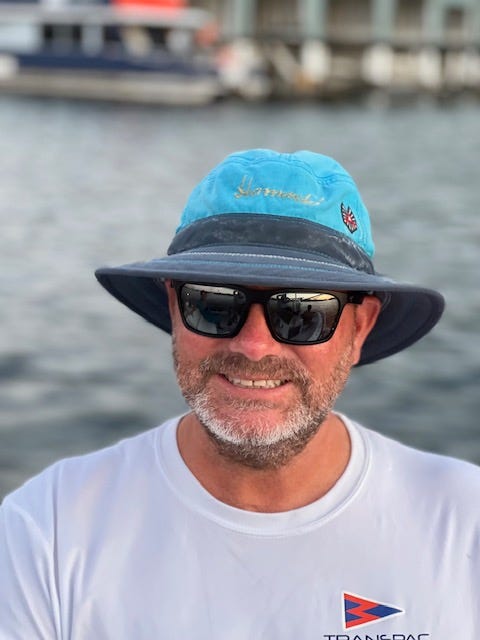
Sailors on the Pacific Ocean don’t frequently see the kinds of thunderstorms that hammer the Great Lakes, he said.
Looking back on the epic rescue, racers said, things could have gone badly and led to a fourth death since 2011 during the race from Chicago to Mackinac Island.
Dougherty, who works in international business, is a veteran offshore racer on the Pacific, the Atlantic, the Caribbean, the Mediterranean and the South China Sea.
But the Chicago to Mackinac and Port Huron to Mackinac races are different.
The violent weather systems on Lake Michigan and Lake Huron, he said, are unique and need to be respected.
How a man ends up alone in the water
The crew of Callisto, a J/125 owned and skippered by Jim Murray of Lake Bluff, Illinois, knew storms were coming an hour before they arrived. He called for all hands on deck.
Everybody put on their personal floatation device, harness and clipped into tethers. Sailors also wore belt packs with a whistle, a personal GPS locator beacon, a knife, and a strobe light.
The crew doused their big spinnaker sail to slow things down. They also reefed the main sail, which reduces the sail area so it captures less wind.
This tactic is commonly used to maintain control in unpredictable high wind.
Earlier, wind had been so strong that it snapped the masts of three enormous boats.
“We had rain. We had lightning. We had 30 knots of breeze,” said Murray, who grew up in Grosse Pointe Woods, Michigan and sailed Lake St. Clair. “We popped out on the other side, the rain stopped and the wind shifted back to the southwest.”
They monitored the weather with radar technology using Starlink. They saw rain ahead but no active thunderstorms. What they didn’t realize is that they were sailing into a “pocket where you had a collapsing (storm) cell nearby,” Murray said.
Callisto mistakenly thought everything was calm.
‘In a nanosecond’
“After waiting 10 to 15 minutes, we shook the reef and resumed racing,” he said.
“We were sailing along, I’d say 10 minutes after putting the kite back up,” Murray said. “We just noticed the breeze was getting squirrely. That set off alarm bells. There was something still out there, and it was still unsettled.”
In that moment, the skipper called for the crew to pull down the spinnaker for a second time. Dougherty and three other crew members wrestled the sail down, Dougherty unclipped his tether to move around a crew member into the cockpit when a 38-knot wind blast slammed into the 41-foot race boat.
“The boat heeled over,” Murray said. “Shawn was in the water in a nanosecond.”
The boat was going 15 knots. Dougherty goes over the rail into the water. The skipper yells “man overboard” while another crew member punches the man overboard button.

As Dougherty goes overboard, a crewmate lunging to reach the sailor in distress actually lets go of the giant spinnaker sail. It blows out of the boat and into the water. That has the benefit of stopping the boat, but it also wraps around the rudder that steers the vessel.
They can see Dougherty in the water with his strobe light.
‘Like a cake deflating’
Racers on Callisto pull out their knives to slice at the kite, cutting away the giant sail in hopes that it will untangle from the boat. Steering was impossible.
“We’re all sawing away. We had to get the lines out of the water before we could start the engine,” Murray said.
They could see on their instrumentation that Dougherty was taking all the proper actions, so he was OK. He didn’t hit his head on the way into the water, as can happen He was wearing an inflatable lifejacket often used for ocean racing.
The whole scene was unpredictable.
“When a thunderstorm dies at night, it’s like a cake deflating,” Murray said. “It sprays air out at the base. So it’s a sudden massive gust of breeze with rapid wind shifts. The wind had no business coming out of the east. It came out from a collapsing cell. You could see lightning all over the place. It wasn’t blowing 40 knots anymore, it was blowing 20. But it was still a very confused sea state.”
Storms on the Pacific Ocean pop up like popcorn and die down, Murray said.
“It’s nothing like the line of thunderstorms that form on Lake Michigan. You’re seeing more and more these storms build up. Our 10 minutes of waiting maybe should have been half an hour. We had to get further away from the disturbed air,” he said. “When you see rain on the radar, are you really sure there isn’t a collapsing cell lurking? I don’t think you can be certain. Technology has given us the illusion you can really know what’s going on.”
This is why safety training is essential to survival, he said.
Racers respond to calls for help
Multiple Boats on the radio responded to the plea for help.
GPS technology showed that Madcap was closest.
“We’re sailing 10 knots, and we had to stop fast and safely. Not doing so can create another emergency,” said John Hoskins, 47, of Lake Bluff, Illinois and owner of the Santa Cruz 52 that launched the rescue.
He had been sitting in his navigation station with internet connection on the boat, following radar and warnings from the national weather service, tracking boats in the vicinity and monitoring the marine radio. During storms, Hoskins or another crew sat in the navigation station to be on high alert to respond to any emergency. Nav duty is usually a boring job, Hoskins said, but not that night.
“I told our team, ‘We’re out of the race. We’re going to pick up a man overboard,’” Hoskins said. “The whole plan changed as soon as there was a man overboard. I didn’t care about the race. Our new mission was to get this guy. I had to be direct with the crew, ‘Shut it down. We’re done. Turn around.’ And they did. Incredibly well.”
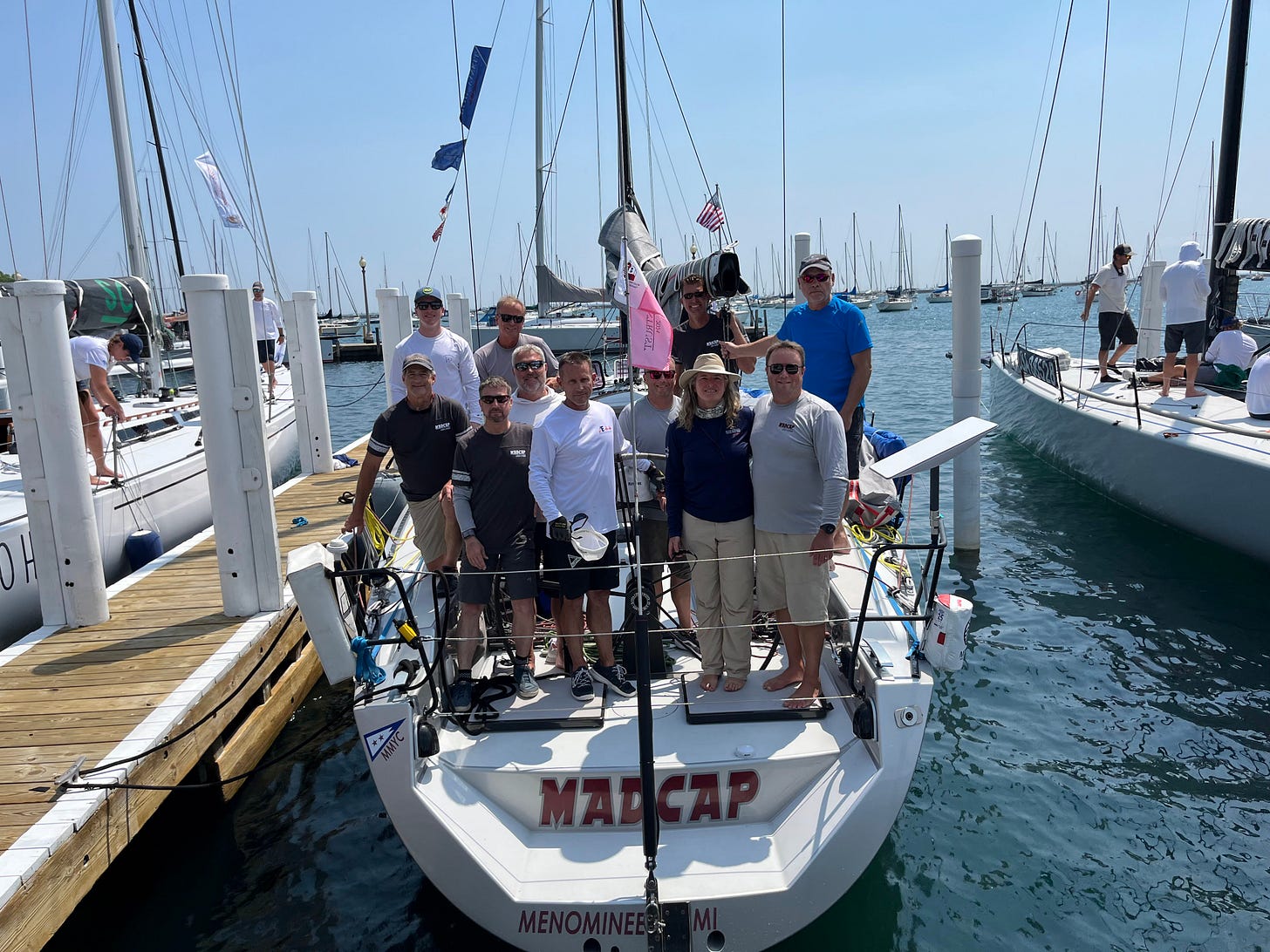
Just before the rescue, Madcap was hit by a thunderstorm with big wind gusts and so shortened their sails. It was about 11 p.m. central time. And then Hoskins hears the call for help from Callisto.
“We got the electronic emergency signals automatically coming from the man overboard,” Hoskins said. “I responded to Callisto and said, ‘We’ll turn around and head your way.’ It took maybe 3 to 5 minutes.”
Battling darkness and choppy water
Personal locator beacon signals carried by Dougherty alerted the instrument systems on surrounding boats. Madcap could see where he was drifting.
“It’s black. There’s a little bit of lightning. Winds are blowing 15 to 20 knots. It’s raining,” Hoskins said. “We’re changing sails. We could have someone go overboard. There was risk. We had to get the situation under control. We were motoring and we didn’t want to approach him too fast.”
The water was choppy, a confused sea state leftover by thunderstorms. It was 1- to 2- feet of chop. All navigation lights on Madcap are lit up, so Dougherty could see the rescuers who held a spotlight. And they could see him.
Mike Smith of Lake Forest, Illinois was driving the boat. Paul Hogue of San Diego was at the front of the boat with Matt Rubsam of Glenview, Illinois and yelling to see if Dougherty was OK on approach. Marian Hoskins, who usually drives the boat, served as a conduit between the deck crew and navigator to make sure everyone was communicating as quickly and efficiently as possible.
“You have to position the boat so you don’t run him over, and that requires skill,” Hoskins said. “There is a danger of him going under the boat, when you have wind and the boat drifts sideways … We got within 20 feet of him and threw the Life Sling in his direction, a floatable horseshoe with a 100-foot line.”
Mark Strube of San Diego, a 6-foot-5-inch professional sailor who played football at Northern Michigan University in Marquette, Michigan, pulled Dougherty onto the boat with the help of Marian Hoskins, co-owner of the boat and a cyclist whose physical strength is enhanced by workouts at the gym.
The whole rescue, from getting the call to pulling Dougherty aboard, took about 20 minutes, Hoskins said. It felt longer.
“Five years ago, I don’t know if it would be possible to do it so quickly,” he said. “It’s the training. It’s the classes required through U.S. Sailing. So many things can go wrong.”
Safety at sea classes, personal safety gear and locator beacon technology requirements are essential to racing, Hoskins said.
23 hours below deck
Once Dougherty was safely on Madcap, the crew gave him dry clothes to put on and offered him food. He was fine. And he requested a transfer back to Callisto. Hoskins overruled the idea, knowing conditions remained volatile.
Both boats resumed racing.
Madcap crew members asked Dougherty not to help them in any way and he mostly remained below deck for the next 23 hours. Racing rules prevented him from touching anything as he wasn’t authorized to be aboard. Race rules are strict.
The rescue happened about 11:30 p.m. on Saturday and they crossed the finish line around 10:30 p.m. the following night, Hoskins said.
“Shawn rested a lot at first,” Hoskins said. “He is a great guy and a pleasure to have on board.”
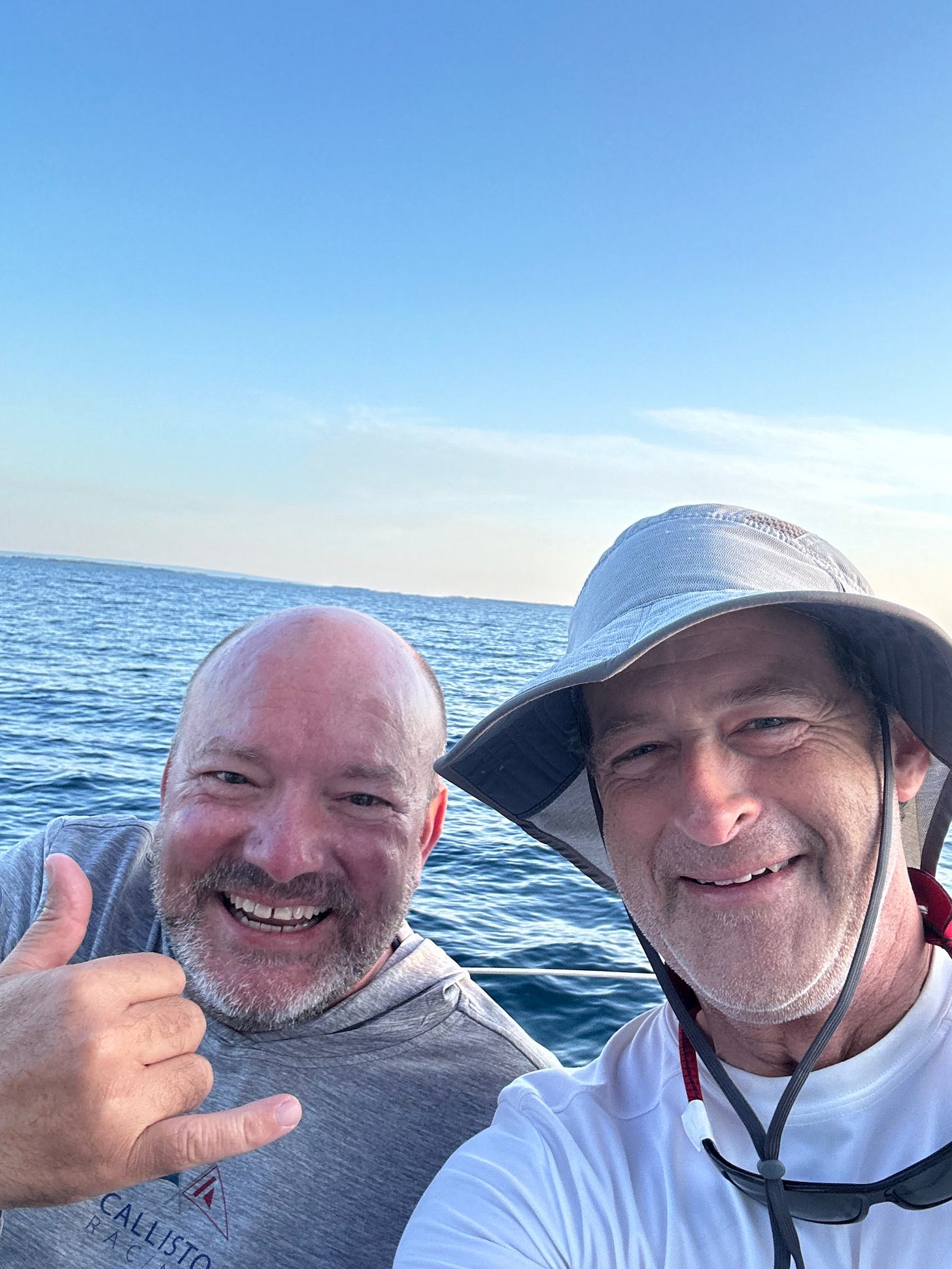
Madcap placed second in class, plus won a rescue medal awarded by U.S. Sailing.
It was an emotional 333-statute-mile (289-nautical-mile) race with 247 boats.
After a jury of sailing judges ruled Callisto was was eligible to compete, the boat that ended the race with one fewer crew member placed first in a separate class.
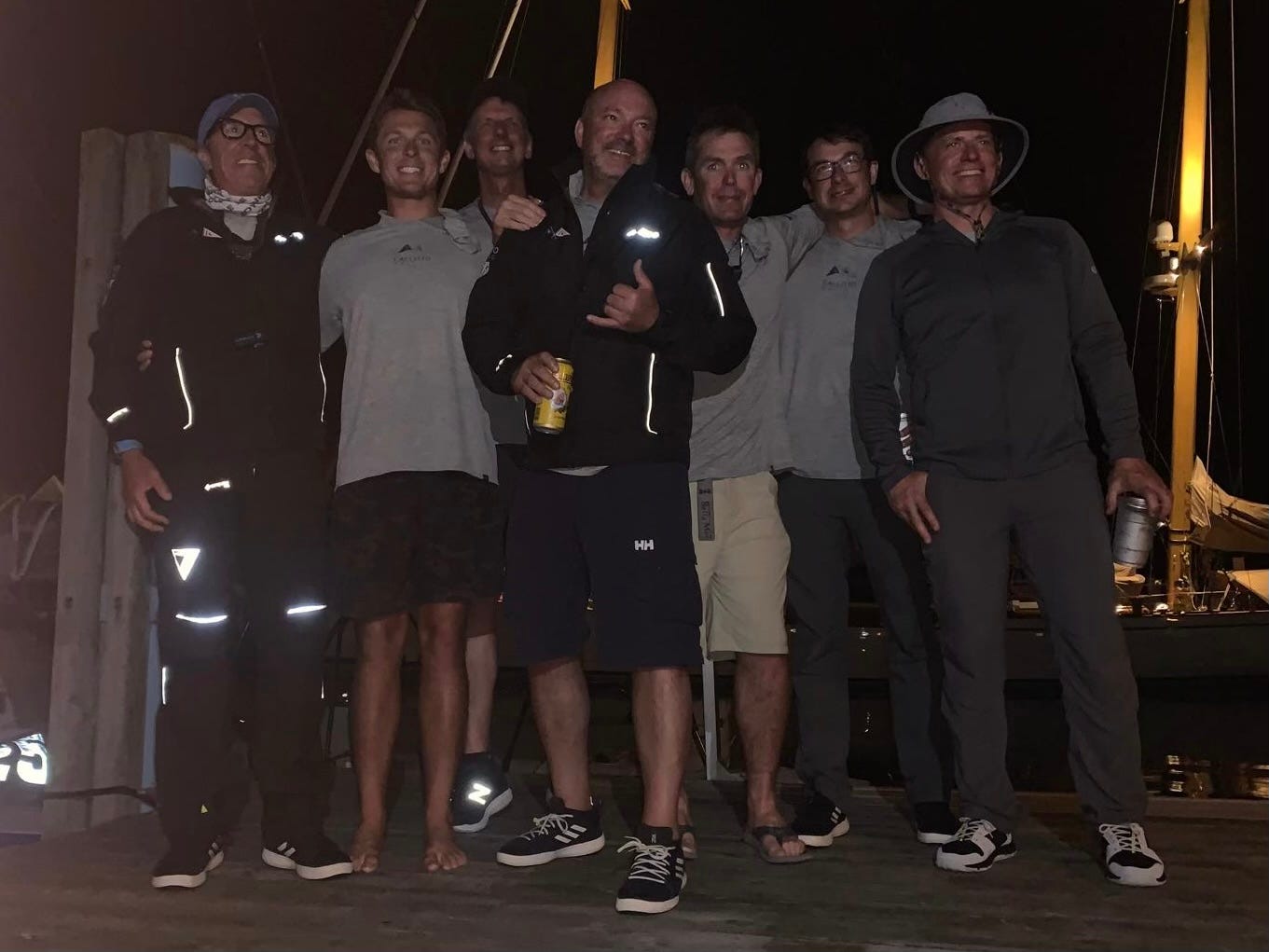
Tears flowed among sailors in the audience during the award ceremony, when they brought the man overboard on stage, Dougherty said.
“Everybody hugged and I think that’s what got to people, the significance of how it can be done correctly. It was kind of heavy,” he said. “It didn’t matter who it was, it could be any of us.”
Thoughts while waiting to be rescued
Falling over the boat’s life lines into the lake, Dougherty somersaulted and landed on his back, he said.
Then he thought of his family, including a 20-year-old son studying construction management at the University of Washington and a 23-year-old son who had just graduated from the University of Edinburgh.
Dougherty had flown from Scotland to Chicago to race.

“I had little reflection time in the middle of the lake, thinking, ‘Am I doing too many things? Should I slow down a little bit?’” Dougherty said. “But I realized it was really just an isolated incident.”
A chilling effect
Lynn Kotwicki, 52, of Royal Oak, past commodore of the Bayview Yacht Club in Detroit, said competitors on Lake Michigan followed the rescue. They had monitored closely the weather and watched boats get knocked by gusts.
“Our skipper said get up on deck and prepare,” said Kotwicki, who raced on the J/120 Hot Ticket. “We were at the ready to help if needed. While riding out the rest of the storm, it was oddly quiet because everyone was more introspective. This is real. It could happen to any of us.”
Heading into the next race, sailors are on high alert, she said.
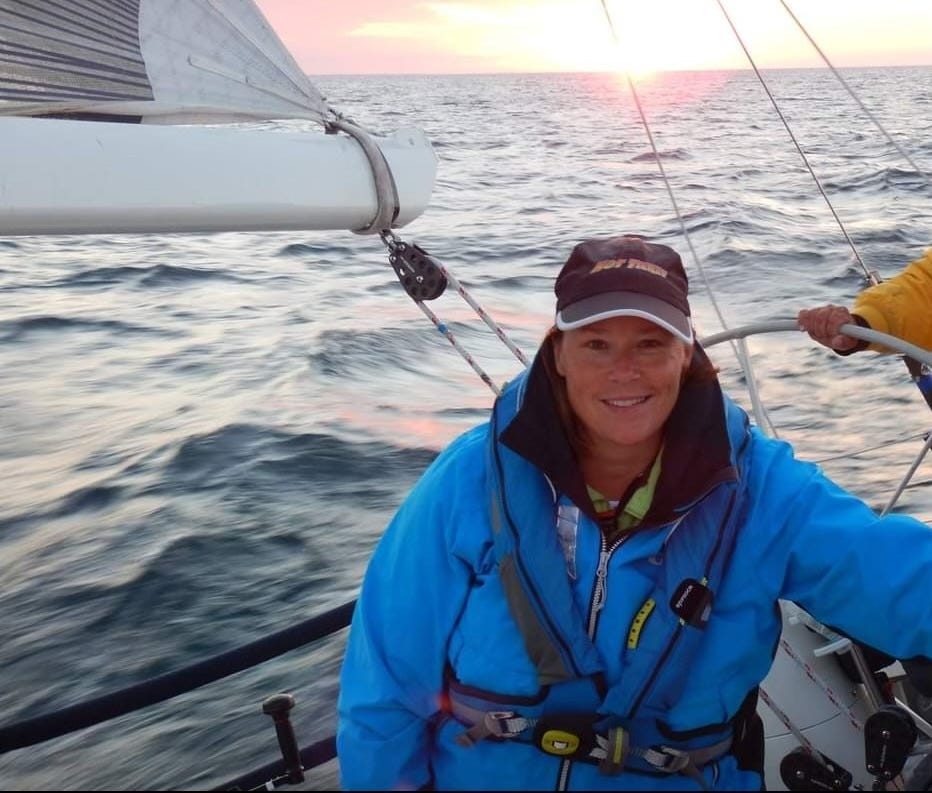
“We’re double-checking our safety gear,” said Kotwicki, a business management consultant. “Each crew member is responsible for their own gear, but we’re all in this together.”
She posted July l7 on Facebook a race tracker showing the “hole of disruption.”
Act II
Both Callisto and Madcap plan to race this weekend from Port Huron to Mackinac on a single course that spans 204 nautical miles with the most sailboats registered in history, at 334, according to the Bayview Yacht Club.
In the few days between annual races, Hoskins has been checking on the three auto body shops he owns in Illinois and Wisconsin that specialize in collision work.
And Shawn Dougherty? He is finished with the Great Lakes this year. But he does plan to get out on the water this weekend in Seattle.
“You’ve got to get back on that pony, right?” he said. “It’s all good. The guys on Callisto did everything textbook perfect. And everyone was cheering for Madcap. we all became friends.”
Special thanks to the sailors who subscribe, making more coverage possible. Grateful to all readers who support my work through payment, sharing and comments.
Note: Phoebe Wall Howard is married to the past commodore of the Port Huron Yacht Club. She covered races to Mackinac for nearly seven years as a Detroit Free Press staff writer.

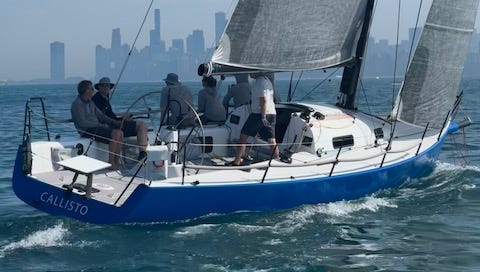


My first Chicago Mac Race we were hit with 50 knot winds on the first night out, just off the coast of lower Wisconsin. We had a jib tear, rendering it useless. (We mended by hand the next morning). It was a scary night of heavy squalls on Lake Michigan for my first Mac. Lightning filled the sky and several boats did not finish. I was in the T-Ten class, a 33 foot (10 Meter) one-design boat, one of the most competitive classes on Lake Michigan.
I was a bit scared, but had to suck it up. Falling overboard was not even a thought, although I carried on me all of the required equipment.
This harrowing story tells a great teaching story, as well as inspiration for those of us who head out on water. I’m glad the story ended happily.
The year after I moved to Florida from Chicago there were two on the water deaths in my former fleet. One was a heart attack, the other a crew member was knocked overboard when the boom hit him in the head.
I loved racing until I could no longer keep my equilibrium. Retiring from sailing is one of the most heartbreaking that’s ever happened to me.
Thanks for this story of survival and I’m happy you’re alive to tell the tale!
What a vivid, gripping narrative -- a well-told drama. Kudos on capturing the tension, emotions and skills, Phoebe. You've still got it!